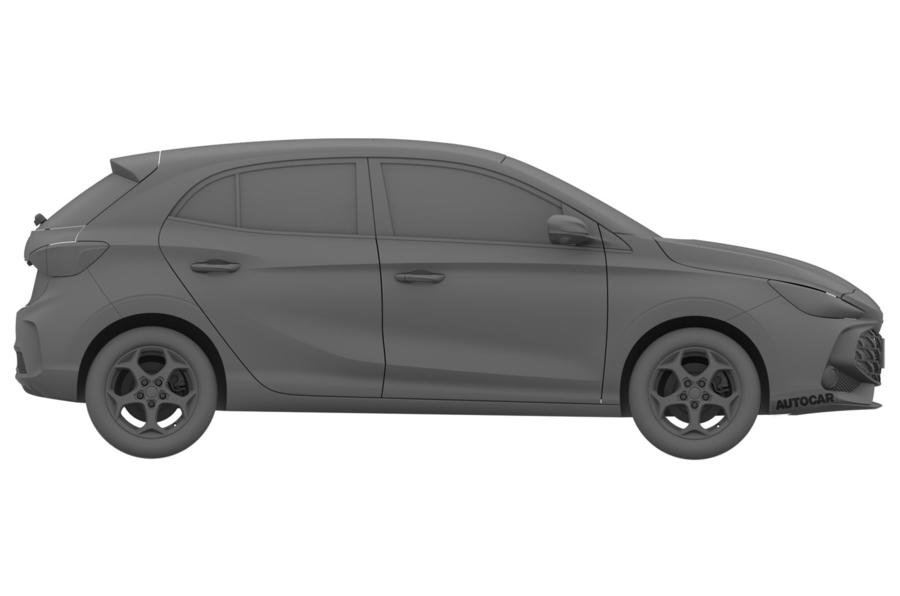MG has confirmed that it will unwrap the next-generation MG 3 at the Geneva motor show on 26 February.
The Chinese brand made the announcement on X, posting an undisguised image of the new supermini’s front end.
Trademark filings from September previously revealed the exterior design of the new 3, confirming that it has taken influence from both the larger MG 4 hatchback and the new MG Cyberster flagship sports car.
Unlike those cars, though, the new 3 is set to stay true to its affordable billing by sticking with petrol power rather than switching to a pricier electric drivetrain – a decision seemingly corroborated by the new car’s lengthy front overhang, sizeable grille and a filler cap at the rear that’s clearly too small to accommodate a CCS charging socket.
The petrol-engined supermini is an increasingly rare breed in the UK, following the exits of likes of the Ford Fiesta and Kia Rio, and the current 3 is one of just three such cars still on sale for less than £15,000.
The new MG3 will be unveiled at the Geneva International Motor Show on February 26. Take a sneak peek at this beauty and stay tuned. pic.twitter.com/Vh5zdVPV2v
— @MGMotorEurope (@MGMotorEurope) January 15, 2024
Its successor is tipped to adopt emissions-reducing mild-hybrid technology, which – together with wider inflationary pressures and the introduction of heavily updated interior and driver-assist technology – will make it a more expensive proposition, but bosses are keen that it remains one of the market’s most affordable new cars.
The current 3 is a minor player compared with the MG ZS and MG HS compact SUVs, having taken just 2920 sales across Europe in the first half of 2023.
The figures don’t stack up to convert the MG 3 to electric power, hence its continuation as an ICE model, MG UK commercial director Guy Pigounakis told Autocar recently.
“Developing a small electric car is only marginally cheaper than developing a bigger car,” he said. “Then half the price is battery, so it becomes a £25,000 car, which is unaffordable.”

.
More about this article: Read More
Source: www.autocar.co.uk
This notice was published: 2024-01-15 15:30:00

Coach is a weekly British motoring magazine published by Haymarket Media Group. First published in 1895, it bills itself as “the world’s oldest automotive magazine.”

